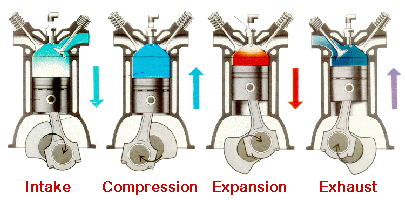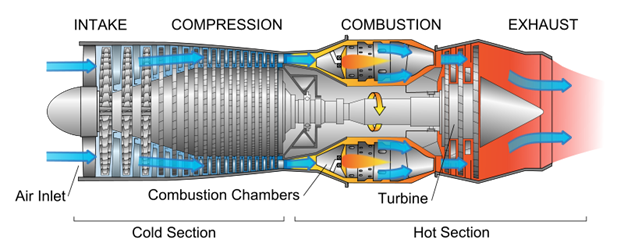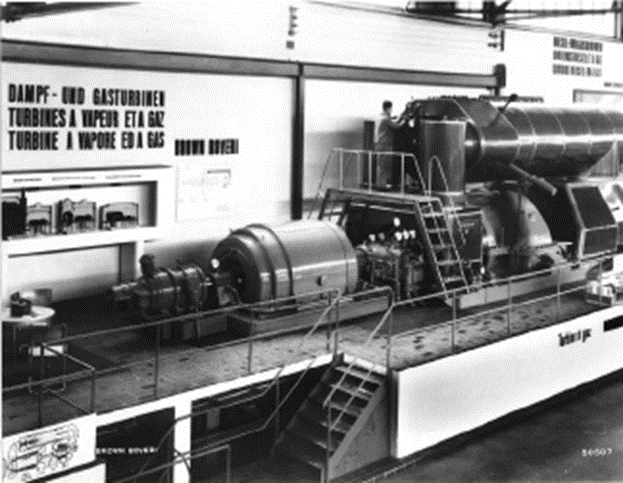Gas Turbines - A Brief History Lesson
What is a gas turbine?
Let's first look at an engine that most of us know well; the gas engine in your car. In a gasoline reciprocating engine, the piston compresses the air fuel mixture, the mixture is ignited and the expanding gases push the piston inside the cylinder, the exhaust is purged from the cylinder and the process is repeated. Therefore, there is a series of combustions that occur over and over again. Because it occurs over and over again it is called an Intermittent internal combustion engine. The reciprocating motion of the piston is converted to rotational motion via a crankshaft.

In a gas turbine the air is compressed via a centrifugal or an axial compressor, the discharge air from the compressor flows into the combustion chamber where fuel is burned, the air is heated and expands, and the expanding hot gases pass by turbine blades that convert the thrust of the hot gases into rotational energy. This process is continuous, therefore a gas turbine is a Continuous internal combustion engine. The rotating turbine shaft turns the compressor and the left-over energy is used to provide thrust or drive a load like an electrical generator.

Unlike a piston engine, there are no valves or other means to separate the air inlet and exhaust from the combustion chamber; the pressure and kinetic/dynamic energy of the moving gases keep the flow in check and traveling in the correct direction. The compressor and the turbine are on the same shaft which is the only moving part. This is an overgeneralization, there are multi-shaft gas turbines and there is auxiliary equipment such as lube oil pumps, etc. But in general, one shaft with a compressor section and a turbine section replace the crankshaft, connecting rods, pistons, cam shafts, valve train, etc.

Patents of gas turbines date back to 1899; however, it is generally agreed that the first commercial industrial gas turbine was installed by Brown, Boveri & Cie (BBC) in 1932 at a power plant in Neuchâtel, Switzerland the gas turbine was in service until 2002. Likewise, the first successful jet engine (also a type of gas turbine) was the Junkers Jumo 004 engine that powered the German Messerschmitt Me 262 towards the end of World War II (Circa 1943). The concept of the modern jet engine was, more or less, invented in parallel by the British inventor Sir Fran Whittle and the German inventor Dr. Hans von Ohain starting in the early 1930’s. Due to funding, the British design efforts stagnated while the German efforts did not, resulting in an airplane that could have changed the outcome of World War II (but fortunately it was too little too late).
In later blogs we’ll discuss the different types of gas turbines.
About the Author
Timothy B. Hatch, B.S.M.E., P.E. is a consulting engineer with our Houston Office. Mr. Hatch is a consulting engineer specializing in the evaluation of industrial accidents, the analysis of losses involving machinery and equipment, the assessment of damage, and the estimation of repair/replacement cost. You may contact Tim for your forensic engineering needs at thatch@edtengineers.com or (281) 463-4548.
Learn about how EDT Forensic Engineering & Consulting approaches construction assessments, scope of damage, and forensic engineering by assigning a file today.

